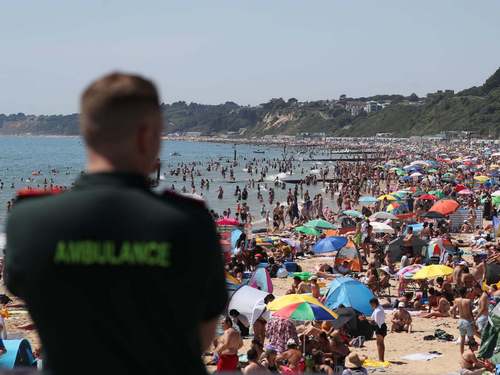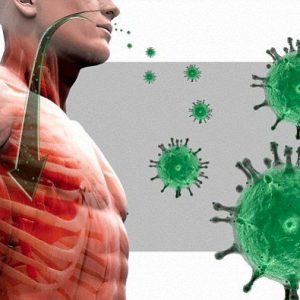The government’s Scientific Advisory Group for Emergencies (Sage) experts and health officials around the world view the R number as a vitally important measure in tracking the spread of the virus, with the clear goal to keep it below one.
The crucial reproduction number showing the rate of coronavirus infection has edged up slightly in England compared to last week, new figures show.
The so-called R number has risen to between 0.8 and one, the government revealed on Friday – a small increase on the estimated number of between 0.8 to 0.9 the week before.
The latest figures – the first weekly update since pubs, restaurants and hotels were allowed to reopen in England on 4 July – give a glimpse of how the lockdown easing has affected the growth rate of the virus.

In a worrying sign, southwest England now has a R number of between 0.7 and 1.1, which means the disease could be growing in the region.
If R is greater than one the epidemic is growing, if R is less than one the epidemic is shrinking.
The latest figures show the Midlands is the only English region where the R number sits below one, while in all other areas it is somewhere between 0.7 or 0.8 and one.
Data showing the daily growth rate in coronavirus infections also indicate a frustrating lack of progress in controlling the disease in England.
The country’s growth rate is now between -4 per cent to -1 per cent, a very slight rise in the rate of Covid-19’s spread compared to between -5 per cent and -2 per cent last week.
It means the growth of coronavirus in England is continuing to shrink – but it appears to be shrinking at a slower rate than last week.
“When there are a small number of cases, estimates of R become less useful in determining the state of the epidemic. R is impossible to estimate with accuracy and will have wide confidence intervals that are likely to include one,” Sage said in a statement.
Sir Patrick Vallance, England’s chief scientific adviser, said last month that the country was approaching a time when the R number would no longer be a useful measure for reproduction, explaining the smaller number of cases would mean local outbreaks could give a skewed impression.
Across the whole of the UK, the R number is unchanged between 0.7 and 0.9, showing the outbreak continues to slowly shrink, nationally. The daily growth rate for the whole of the UK has dropped to between -5 per cent and -2 per cent, compared with a rate of -6 per cent to 0 per day last week.
Commenting on the UK figures, Professor James Naismith, director of the Rosalind Franklin Institute, said: “That the number of cases is falling slightly is to be welcomed.
“It has to be emphasised that no one knows what the safe level of relaxation is for the UK and there is a delay between action and consequence. The virus is here and we could easily see a surge in cases if a mistake is made.”



